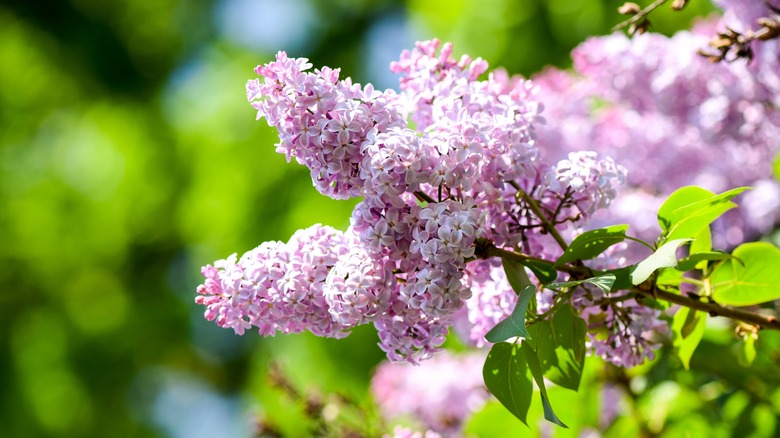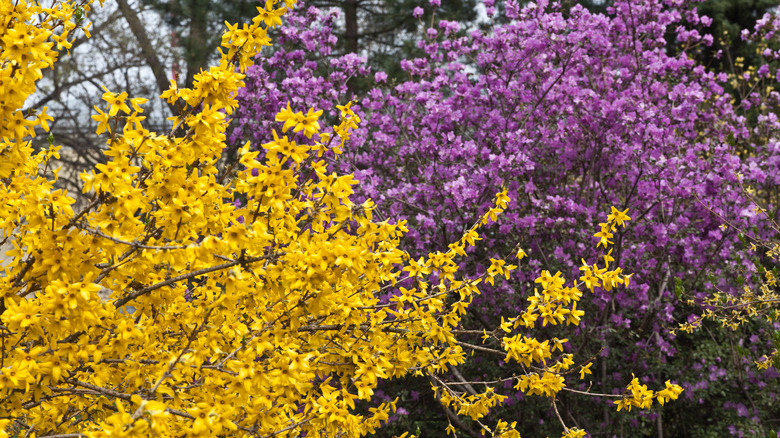Plant Lilacs With This Popular Flowering Shrub For A Garden Full Of Color
Organizing your garden isn't easy — between selecting which plants to seed, deciding where to place them, and curating the perfect color scheme, there's a lot to consider. One way to make gardening easier is by incorporating companion plants to your family of flowers, especially those with a pop of color that encourage passersby to stop and stare. Lilacs, belonging to the Oleaceae family, are fragrant and colorful flowers that bloom perfectly with the ornamental shrub forsythia which belongs to the same olive family. By planting the two side-by-side, these companion plants will flourish and add an irreplaceable touch of color to your garden.
As their name suggests, companion flowers act as complementary plants that are highly encouraged to grow together. They help each other thrive, protect one another from garden pests, and generally benefit your garden. Positive outcomes of companion planting include optimizing soil, preventing weeds, and regulating wind and shade. When it comes to forsythia and lilac, a green foliage backdrop paired with soft purple flowers can bring something new and unique to your blooming garden.
Why you should plant lilac and forsythia together
Aesthetics play a significant role when it comes to organizing your garden, and one way to achieve an aesthetically pleasing garden is through color coordination. While lilacs are a pale purple, forsythia is a yellow-green — opposites on the color wheel. Placing the complementary colors next to each other will help both plants stand out. Besides aesthetics, companion plants can help balance out the amount of essential nutrients or resources spread across the shrub and floral tree. For example, soil with too much moisture can be damaging to forsythia, leaving lilacs to gather some of the moisture and prevent the forsythia from damage. Unlike the forsythia shrub, flowers that bloom in spring and early summer typically react well to excess water.
When placed together, the two plants are quick to attract pollinators to help with plant reproduction. Much like lilacs, forsythia is easy to maintain and typically enjoys similar planting conditions such as exposure to sunlight and high-quality soil as blooming spring bulbs. If your garden needs a colorful backdrop, lilacs and forsythia make a charming pair.
How to plant lilacs and forsythia
Lilacs and forsythia both enjoy sunlight, so ensure that these neighboring plants are placed in one of the more sunny parts of your garden. Additionally, the best way to optimize these companion plants is by placing them where pollinators can see their stand-out colors. Since pollinators are typically drawn to bright colors, this colorful plant pair will help create a beautiful backyard space that is welcoming to butterflies and bees.
Lilacs and forsythia also thrive in similar climate conditions, as is evident by the overlap in their USDA hardiness growing zones. While lilacs benefit from colder climates (zones 3 through 7), forsythia prefers a balance between light and shade (zones 4 through 9), resulting in a happy compromise if planted together — especially with well-drained, neutral pH soil. Forsythia and lilac both benefit from soil that drains moisture well since deep and thorough watering is best to help these plants thrive.


